Key takeaway:
- The origins of tourism can be traced back to ancient civilizations such as Ancient Rome, where leisure travel began to develop. This was followed by the rise of pilgrimages in the Middle Ages and the birth of the travel agency with Thomas Cook.
- The evolution of tourism saw significant developments during the Industrial Revolution, including the rise of leisure and entertainment. Transportation systems and tour packages also played a crucial role in the growth of tourism, as well as the impact of World War II and the subsequent tourism boom.
- Aviation has played a vital role in the development of tourism, with a longstanding fascination with flight throughout history. The Wright Brothers’ contribution led to the revolutionary impact of aviation on travel and tourism.
- The growth and globalization of tourism expanded beyond Europe, thanks to the role of railways, steamships, and navigation. Post-World War II tourism witnessed the rise of coastal destinations.
- In the modern era, budget airlines and online accommodations have had a significant impact on tourism. The economic and social significance of tourism cannot be understated, and sustainable tourism practices are key to addressing the challenges faced in the industry.
- Understanding the history of tourism helps comprehend its importance and significance. From early forms of travel in ancient civilizations to the global phenomenon of modern tourism, the complex field of tourism studies provides insights into the multi-disciplinary nature and historical development of traveling habits and holidaying styles.
The Origins of Tourism
Photo Credits: Ktjkrug.Com by Roy Perez
Tourism has a rich history that dates back centuries, and in this section, we’ll explore its fascinating origins. From the leisure travel culture in Ancient Rome to the pilgrimages of the Middle Ages and the revolutionary impact of Thomas Cook in establishing travel agencies, we’ll uncover how these historical events shaped the foundations of the tourism industry. Get ready to embark on a journey back in time to discover the roots of tourism as we know it today.
Ancient Rome and the development of leisure travel
In Ancient Rome, traveling for pleasure and relaxation was seen as a way to escape the daily grind and show off wealth and social status. Elite citizens enjoyed new cultures, marveled at architectural wonders, and indulged in entertainment. Rich Romans would build lavish villas in picturesque locations as private resorts. Thermal bath complexes also became popular destinations for relaxation and rejuvenation. People believed these hot springs had healing properties. Ancient Rome set the foundation for leisure travel, emphasizing relaxation and entertainment.
The Middle Ages brought traveling to find enlightenment, with people getting lost and finding themselves at the same time.
Pilgrimages in the Middle Ages
In the Middle Ages, pilgrimage was rooted in the belief that visiting holy places could bring spiritual renewal and salvation. People would set off on foot or horseback, travelling for months or even years. Fellow travelers shared stories and experiences and found comfort in their shared mission.
The destinations of these pilgrimages were varied. From Jerusalem in the Holy Land to Santiago de Compostela in Spain and Canterbury in England, each place was special for its religious events or revered figures. One of the most famous routes was the Camino de Santiago, also known as the Way of St. James. Pilgrims crossed Europe to reach the shrine of St. James the Apostle. The journey itself became part of the pilgrimage, with challenges along the way.
Pilgrimage in the Middle Ages impacted individual spirituality and society. It promoted unity among believers and spurred economic growth by increasing trade and developing infrastructure along popular routes. These journeys still have significance today, shedding light on the historical development of faith, travel, and the human search for meaning and transcendence.
Thomas Cook? He was the father of the entire travel agency industry!
Thomas Cook and the birth of the travel agency
Thomas Cook’s revolutionary way of travelling made it possible for folks to explore new places without having to arrange transportation, accommodation, and activities on their own. His ideas, which included pre-planned expeditions and a single price, made travelling easier and more convenient for a broad range of people. This laid the foundation for today’s tour operators and travel agencies.
Moreover, Cook’s success allowed him to expand his business internationally. He organised tours to other European countries and even to the United States. His travel agency was renowned for its quality and dependability, setting standards that are still observed in the industry.
Interestingly, despite advances in transportation and communication, the concept of organised tours has remained largely unchanged. Travel companies continue to play a big role in helping travellers plan their journeys. They give advice, sort out logistics, and provide customised experiences.
In conclusion, Thomas Cook’s pioneering spirit and entrepreneurial vision paved the way for the modern travel agency. He revolutionised tourism by making it more accessible and convenient. To this day, travel companies are helping tourists across the world by providing invaluable aid. The Industrial Revolution, World War II, and beyond have made travel more available, packaged, and explosive than ever before.
The Evolution of Tourism
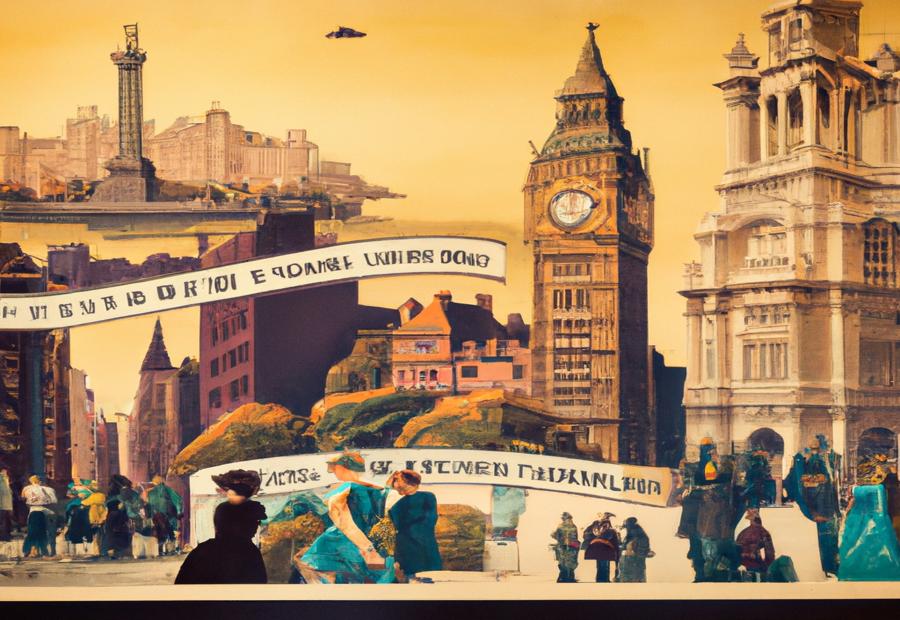
Photo Credits: Ktjkrug.Com by Billy Baker
The evolution of tourism has been shaped by significant historical events and advancements. Discover how the Industrial Revolution sparked a rise in leisure and entertainment, witness the development of transportation systems and tour packages, and explore the impact of World War II and the subsequent boom in tourism. These transformative moments have paved the way for the diverse and dynamic industry we know today.
The Industrial Revolution and the rise of leisure and entertainment
The Industrial Revolution changed many parts of life. Technology and industrial progress brought wealth and extra time for the working class. People looked for ways to use this newfound free time for leisure and entertainment.
Public parks and gardens started popping up. Wealthy industrialists and landowners created these spaces for workers and their families to relax and enjoy. People would picnic, stroll and play outdoor games.
Organized sports became popular. Urbanization caused people to move into cities. Sports clubs and associations formed, giving people chances to compete in cricket, soccer, or tennis. It offered recreation and created community.
Transportation also advanced. Steam-powered railways allowed people to travel faster and farther. This made leisure travel easier; people could explore different regions and visit attractions far away from home.
The Industrial Revolution changed society’s idea of leisure and entertainment. It set the tone for the modern ideas of leisure as part of life. Public parks, sports clubs, and transportation networks created our current understanding of leisure.
The development of transportation systems and tour packages
Transportation systems and tour packages have been a major player in the development of tourism. With the Industrial Revolution, people started to enjoy leisure and entertainment activities more, leading to the building of transportation networks such as railways, steamships, and more. This made travel easier and tour packages began to arise, providing tourists with all-inclusive travel itineraries and services.
After World War II, tourism flourished. Transportation systems and tour packages were essential to this growth. People could now get around easily and cheaply, allowing them to explore different cultures and landscapes. Aircrafts revolutionized travel further, cutting down travel time and making long-distance trips simpler.
Transport systems and tour packages also helped promote coastal destinations. Tourism towards beach destinations boomed in the post-World War II era. Tour operators provided packages with accommodation by the coast and water-based activities. This caused coastal towns to quickly become popular tourist spots.
Thomas Cook’s story is a great example of the importance of transportation systems and tour packages. In 1841, Cook organized his first excursion from Leicester to Loughborough in England by rail. This was the beginning of modern travel agencies, where Cook had enclosed rail carriages for transport and food for travelers. His idea showed how transportation systems and organized tour packages go together to shape tourism.
The impact of World War II and the boom in tourism
World War II had a massive influence on tourism, causing a surge in the industry. The war altered society and technology, which consequently changed the way people journeyed. According to The Reference Data, World War II caused a requirement for leisure and recreation after years of hardship and offering. As countries reconstructed and recovered from the destruction of war, people looked for opportunities to unwind and savor life. This led to an increase in tourism as individuals and families sought out new places for their holidays.
The impact of World War II on tourism can be seen in different ways. New travel destinations and attractions developed. Many areas affected by the war experienced an influx of tourists as they became popular places to visit. For instance, London and Paris had a rise in tourism as people wanted to experience the historical sites and landmarks that featured in the war. Additionally, countries such as Italy had an increase in visitors as people sought to explore its rich cultural heritage.
Besides creating new travel destinations, World War II also sparked advancements in transportation systems which further increased the boom in tourism. The war sped up developments in air travel, with improvements made to planes and airports. This allowed people to travel long distances and discover new places more easily. The Reference Data points out how aviation transformed travel and tourism, making it more accessible and convenient for people all over the world.
One interesting history about the impact of World War II on tourism is the emergence of coastal destinations as popular vacation spots. With better transportation networks, people began going to coastal areas for their trips. This trend can be attributed to both economic factors – with coastal regions providing inexpensive accommodations – and social factors – with people seeking relaxation by the sea after years of turmoil during the war. Coastal destinations such as Miami Beach in Florida became iconic symbols of post-war leisure and significantly contributed to the growth of global tourism.
In conclusion, World War II had a remarkable effect on tourism, causing a boom in the industry. After the war, there was a greater demand for leisure and recreational activities, resulting in an increase in travel and the development of new destinations. Advances in transportation, particularly in aviation, made it simpler for people to travel long distances and explore different cultures. Coastal areas became popular tourist spots as people sought relaxation by the sea after the hardships of war. Ultimately, World War II had a massive role in shaping the modern era of tourism. Aviation revolutionized travel and tourism, with no limits to its potential.
The Role of Aviation in Tourism
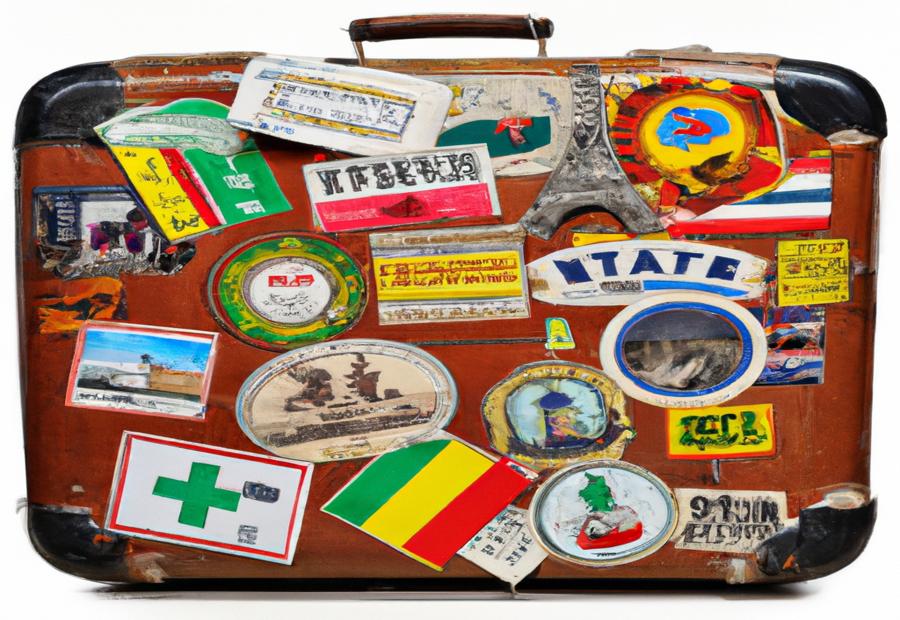
Photo Credits: Ktjkrug.Com by Walter Martin
Throughout history, the fascination with flight has played a pivotal role in shaping the development of aviation. From the groundbreaking achievements of the Wright Brothers to the transformative impact it has had on travel and tourism, this section explores the compelling relationship between aviation and the tourism industry. Prepare to be amazed by the remarkable facts, figures, and events that highlight the vital role of aviation in shaping the way we explore the world.
The fascination with flight throughout history
Inventors and dreamers sought flight during the Middle Ages. One such dreamer was Leonardo da Vinci who sketched designs for flying machines. Though early attempts were unsuccessful, they were the groundwork for future innovation.
The breakthrough happened in 1903 with the Wright Brothers’ first flight. This revolutionized travel and ushered in a new era of aviation. People grew enthralled with the possibilities of flight. It enabled exploration and adventure.
Aviation has evolved over time. Propeller planes to jet engines made air travel faster, safer, and accessible. Now, millions of people take to the skies daily.
It is important to understand this history and appreciate how far air travel has come. This reflects the human desire for exploration and discovery. Technology has enabled incredible achievements in aviation.
The next time you board an airplane or see one in the sky, take a moment to reflect on the remarkable journey of flight. Embrace the sense of wonderment and let it inspire you for your own adventures. The Wright Brothers soared to new heights with their pioneering efforts.
The Wright Brothers and the development of aviation
The Wright Brothers were ingenious and determined. Their contributions to the aviation field were momentous, a milestone in travel and tourism history. They had a vital role in aircraft tech, especially their successful powered flight experiments in 1903. Their aircraft designs and knowledge of aerodynamics changed the way we travel, making way for modern aviation.
The Wright Brothers’ success in aviation caused a chain reaction of improvements in aircraft design and travel abilities. It led to more effective engines, better materials, and safety measures for air travel. This opened up fresh possibilities for tourism and leisure travel by making air transportation speedier, easier to access, and more dependable.
Also, the Wright Brothers’ efforts revealed the potential of aviation for exploration and adventure. With their first flights, they amazed the public and caused widespread interest in flying. This brought more investments in aviation infrastructure such as airports and airlines, aiding the growth of tourism.
Still today, the Wright Brothers’ impact can be seen in modern aviation. From commercial airlines that help global travel to recreational flying activities like skydiving or hot air ballooning, their contributions have impacted the industry deeply. The Wright Brothers’ groundbreaking spirit continues to inspire future generations to cross boundaries and alter our world through innovation in aviation.
How aviation revolutionized travel and tourism
Aviation has truly revolutionized travel and tourism. It has opened up new possibilities for exploration and made destinations previously impossible to reach, accessible.
With flight, people can now cover vast distances in a fraction of the time it would take using other transportation. This has made long-distance travel more efficient and comfortable. Modern aircraft offer amenities such as in-flight entertainment systems, spacious seating arrangements, and on-board dining options. This has transformed the way people view travel and made it more enjoyable.
Furthermore, aviation has been instrumental in fostering globalization. By connecting different parts of the world through air routes, international tourism has surged, promoting cultural understanding and economic growth.
The impact of aviation on travel and tourism cannot be overstated. It has allowed people to explore new destinations easily and quickly, fulfilling their desire for adventure. And, as technology continues to advance, it is likely that aviation will revolutionize the industry further, introducing innovations such as supersonic flights or space travel.
The Growth and Globalization of Tourism

Photo Credits: Ktjkrug.Com by Michael Green
The growth and globalization of tourism have revolutionized travel in numerous ways, extending beyond Europe’s borders. The development of railways, steamships, and navigation played a pivotal role, making travel more accessible and convenient. After World War II, tourism experienced a surge, particularly with the rise of coastal destinations. These sub-sections will shed light on the fascinating aspects of tourism’s expansion and its impact on the world.
The expansion of tourism beyond Europe
The growth of tourism was boosted by the post-WWII vacationing boom. People wanted leisure and relaxation, so coastal destinations became attractive for sun, sand and sea.
It’s clear that tourism outside Europe has had an immense effect on economies and societies. Tourists bring economic opportunities and revenue. Plus, it encourages cultural exchange between regions.
Pro Tip: Look beyond Europe for your next trip. You’ll encounter different cultures and broaden your horizons.
Tourism has a fascinating history. Before budget planes and online bookings, there were railways, steamships and navigation, inspiring wanderlust.
The role of railways, steamships, and navigation in promoting tourism
Railways, steamships, and navigation played a massive role in the growth of tourism. Railways allowed people to reach far-off places quickly and conveniently. Steamships made it possible for tourists to explore oceans and continents. Navigation technology made travel safer and easier.
The 19th century saw a rise in railways. They provided a rapid and efficient mode of transportation to tourist locations. This caused railway excursions – trips to picturesque places or special events. Hotels and other accommodation near railway stations sprang up for tourists. Tourism became more structured.
Steamships revolutionised long-distance sea travel. Before they were invented, ocean voyages took weeks or months. Steam-powered ships cut travel times, making distant destinations available to tourists. Steamship companies offered luxurious amenities, making voyages enjoyable. This led to increased leisure cruising and exploration of coastal regions.
Navigation technology helped promote tourism too. Compasses and sextants let sailors tell their positions at sea, keeping commercial and tourist ships safe. Mapping techniques improved with accurate charts and atlases, giving travelers reliable navigational aids.
Post-World War II tourism and the rise of coastal destinations
After World War II, tourism saw a remarkable growth in coastal destinations. This was due to factors such as improved transport systems, increased leisure time for the general population, and a desire to experience nature after the war. Advances in transport made it easier to travel to these areas, while tour packages provided all-inclusive trips. Furthermore, rebuilding efforts led to modern infrastructure and tourist facilities.
This period remains significant as it laid the foundation for today’s seaside resorts and beach vacations, enjoyed by millions of travelers each year. It highlights how societal changes influence travel patterns and preferences worldwide. Nowadays, budget airlines and online accommodations make it easier and more affordable than ever to explore the world.
The Modern Era of Tourism
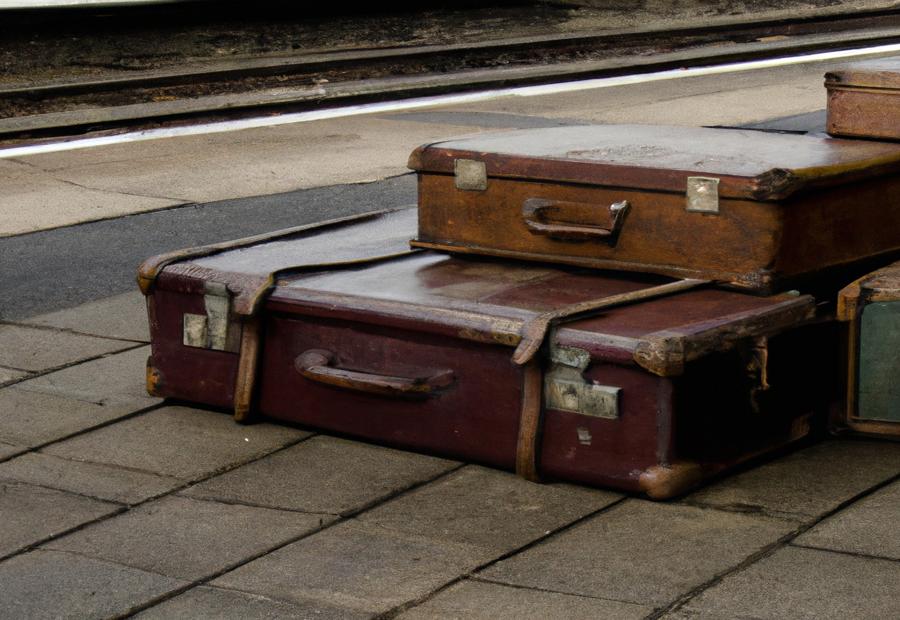
Photo Credits: Ktjkrug.Com by Billy Davis
The modern era of tourism has been shaped by various factors including the impact of budget airlines and online accommodations, the economic and social significance of tourism, as well as the challenges and importance of sustainable tourism practices. Let’s explore how these elements have transformed the way we travel, uncovering the key aspects that have contributed to the growth and development of tourism in recent times.
The impact of budget airlines and online accommodations
This transformation in tourism has left its mark. Firstly, budget airlines and online accommodations have made travel more affordable for all economic backgrounds. So, people who couldn’t afford it before can now explore different places.
Moreover, cheaper fares and more options have caused a shift in travel patterns. More people take short trips instead of one long vacation. Weekend getaways or city breaks are popular choices for quick escapes.
Furthermore, budget airlines and online accommodations have also changed destination choices. Tourists now have access to lesser-known spots and unique cultural experiences. These hidden gems were previously overshadowed by mainstream tourist hotspots.
Altogether, budget airlines and online accommodations have revolutionized the tourism industry. They have made travel more accessible, affordable, and diverse.
The economic and social significance of tourism
Tourism is key to economic and social development. It brings growth and prosperity to communities. It boosts the economy and has an impact on society. One of its main contributions is the preservation of cultural heritage. Funds from tourists can be used to maintain and restore historical sites, museums, and cultural events. This allows communities to show their traditions, customs, and local products, preserving their identity and promoting diversity.
Furthermore, it is important for environmental conservation. Sustainable tourism practices protect natural resources and biodiversity. This includes responsible waste management, energy conservation, and supporting local conservation projects.
Therefore, understanding the significance of tourism is very important. It helps create effective plans and strategies to maximize positive impacts and reduce negative consequences. By appreciating the value of tourism in fostering economic growth, promoting cultural understanding, preserving heritage sites, and conserving nature, stakeholders can work together to have a sustainable future.
However, we must be aware of the challenges of sustainable tourism. Leaving a bad impression on a delicate ecosystem can be detrimental. So, let’s prioritize environmental conservation while reaping the benefits of tourism. By doing this, we can have a sustainable approach to tourism and benefit current and future generations.
The challenges and importance of sustainable tourism practices
Sustainable tourism practices have both challenges and great importance in the modern era. Global tourism has caused increased environmental worries and impacts on local communities. Sustainable tourism practices try to lessen these bad effects and promote responsible travel.
The challenges include finding balance between tourism growth and protecting natural resources, plus preserving cultural heritage. Tourists, travel companies, governments, and local communities must work together to put in sustainable policies and practices. This involves managing waste, saving energy and water, helping local businesses, keeping wildlife habitats safe, and respecting cultural customs.
It is vital to understand the challenges and importance of sustainable tourism practices for the industry’s future. Travelers want to find places that prioritize sustainability. By using these practices, places can draw in eco-conscious tourists and keep natural attractions safe for future generations.
Overall, understanding the challenges and importance of sustainable tourism practices is key for fostering responsible travel and keeping the industry growing. With careful planning, collaboration, and dedication from everyone involved, we can make a future where tourism benefits both travelers and host communities while keeping bad impacts on the environment low.
The History of Tourism: Prehistoric Times to the Present

Photo Credits: Ktjkrug.Com by Dylan Clark
From the early forms of travel in ancient civilizations to the development of modern tourism as a global phenomenon, embark on a journey through the captivating history of tourism. Discover the significance of the Grand Tour and educational travel in the 16th-18th centuries, and delve into the foundations of modern tourism in the 19th century. Brace yourself for a fascinating exploration of how tourism has evolved from prehistoric times to the present, shaping our world and creating unforgettable experiences.
Early forms of travel in ancient civilizations
Travel has always been a big part of human life, even in ancient times. Back then, people had various means of getting around, which let them explore new places and meet different cultures. This early form of travel in ancient civilizations set the groundwork for today’s tourism.
Egyptians, for example, used the Nile River to travel across their empire. And, Mesopotamians used the Tigris and Euphrates rivers. Land routes like the Silk Road connected China with Europe. It enabled traders and explorers to go long distances and exchange goods and ideas.
Maritime travel was also common in ancient civilizations. The Phoenicians were great sailors and created trading colonies in the Mediterranean Sea. Their voyages encouraged commerce and cultural exchanges between different societies.
Early forms of travel weren’t just for business, either. Pilgrimages to places like Jerusalem were common among religious followers. Travel gave people the chance to see other cultures, art, and architecture.
One example is the Grand Tour. It was a traditional educational trip for wealthy Europeans in the 16th-18th centuries. They visited important historical sites to gain knowledge of ancient civilizations. They collected artifacts, manuscripts, and paintings to preserve and appreciate culture.
The Grand Tour helped bring different cultures together. It influenced artistic movements, such as Neoclassicism, which took inspiration from the ruins and artworks found on these trips. So, before Instagram, the Grand Tour was a way for rich people to show off their fancy destinations.
The Grand Tour and educational travel in the 16th-18th centuries
Between the 16th and 18th centuries, the Grand Tour was a popular form of travel. Young Europeans from privileged backgrounds would embark on a long journey across Europe to learn, refine their social skills, and broaden their outlook.
This educational pilgrimage allowed men to experience art, history, literature, and architecture. They visited cities like Rome, Florence, Venice, and Paris to explore ancient civilizations and influential artistic movements.
The primary purpose of this tour was to learn through direct experiences and interactions with prominent intellectuals. It provided a comprehensive understanding of European society, while also connecting different countries and regions.
The Grand Tour encouraged cultural exchange, promoting tolerance and appreciation for diverse cultures. It played an important role in developing the intellect of individuals in the 16th-18th centuries. It also contributed to the growth of education in Europe at that time.
The 19th century saw the beginnings of modern tourism. People were already willing to travel far and wide, even to avoid their in-laws!
The foundations of modern tourism in the 19th century
In the 19th century, the building blocks of modern tourism were put in place; a major change in travel trends. Transports such as the railways and steamships had a major impact, making travel much easier and efficient. This allowed people to explore new places and learn more about different cultures. Furthermore, industrialization and more leisure time for the middle class also played a part in the growth of tourism.
Organized tour packages were created at this time; something that hadn’t been possible before. Thomas Cook, a prominent entrepreneur, introduced the concept of travel agencies. They provided pre-planned itineraries and accommodation for people looking for an effortless travel experience.
Exploring diverse landscapes and natural wonders was in fashion during the 19th century. Coastal destinations were heavily promoted and became hot holiday spots for those seeking some rest and relaxation by the seaside.
To build upon the foundations of the 19th century, transport systems need to be improved in order to make it simpler to visit remote and unknown areas. Sustainable tourism practices need to be implemented in order for future generations to enjoy these places without damaging them.
The history of modern tourism has been shaped by transportation, tour packages, and people’s attitudes towards leisure. With continued efforts towards sustainability and accessibility, global tourism will be a success for generations to come. Tourism is growing on a global level and the world is becoming smaller.
The development of tourism as a global phenomenon
Aviation has been a game-changer for travel and tourism. The Wright Brothers pioneered the field of aviation, leading to the invention of airplanes. Now, people can get to faraway places faster and easier than ever before. This breakthrough opened up new possibilities for global tourism. People can visit different countries and experience diverse cultures.
Budget airlines and online accommodations platforms have made air travel more affordable. This has allowed a larger number of people to go on international trips.
Economically and socially, tourism is hugely important. It contributes to job creation, infrastructure development, and foreign exchange earnings. Plus, it encourages cultural exchange between nations.
However, there are challenges related to tourism growth. These include sustainability, impacts on local communities, and environmental impacts. Sustainable tourism practices help reduce negative impacts and maximize positive ones.
Tourism has led to an increased cultural exchange between nations. This shows the great influence of tourism on shaping global culture and fostering interconnectedness.
The Complex History of Tourism
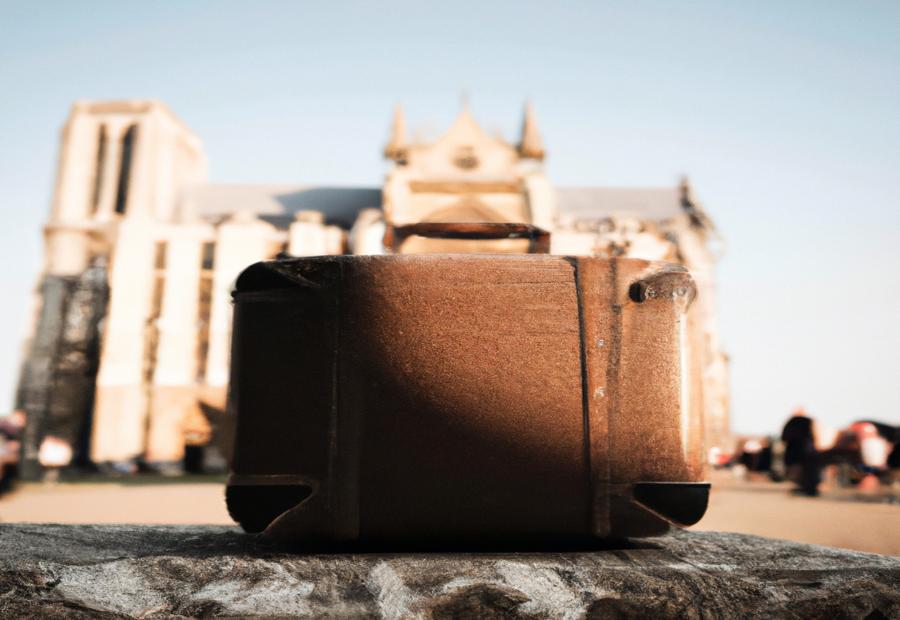
Photo Credits: Ktjkrug.Com by Steven Thomas
The intricate world of tourism has a rich and complex history. Delving into the multi-disciplinary field of tourism studies, we’ll explore the positive and negative perspectives on tourism. Additionally, we’ll uncover the historical development of traveling habits and holidaying styles. Prepare to embark on a journey that unearths the diverse facets and evolution of tourism throughout time.
The multi-disciplinary field of tourism studies
The field of tourism studies dives into the industry, investigating tourist behavior and motivations, destination development and management, sustainability practices, marketing strategies, economic impacts, and policy-making. Researchers look at how individuals and societies experience and perceive tourism, and its effects on local communities and environments.
Data is collected and analyzed through surveys, interviews, observations, and statistical analysis. This multi-disciplinary approach helps to comprehend tourism from many perspectives.
This study also acknowledges the connections between transportation, hospitality, attractions, events, and services. It stresses the need for collaboration between stakeholders to establish sustainable tourism strategies which benefit both tourists and host communities.
Tourism can be a wild ride – it shows us the best and worst of a destination.
The positive and negative perspectives on tourism
The History of Tourism has two sides: positives and negatives. Positively, it brings economic advantages such as job openings, income, and helps local businesses. It also helps different societies learn from each other.
But there are challenges. Too many people, harming the environment, and changing traditional cultures are some issues. And when one area gets all the tourists, it can lead to inequality and relying too much on tourism.
We should remember the good things tourism does and try to fix the bad stuff. Doing tourism the right way can give us the best of both worlds. Check out this interesting History of Tourism to learn more about it.
As an example, after World War II, tourism was great for the economy, but also put a strain on natural resources and locals. Knowing this can help us move forward with tourism in the future.
Looking at how tourism has changed over time, from way back to now, is like having a time machine with a travel guide.
Understanding the historical development of traveling habits and holidaying styles
The history of travel and holidays dates back to old civilizations. Ancient Rome had wealthy citizens who traveled the empire for different cultures and landscapes. In the Middle Ages, pilgrimages were a common form of travel.
In the 19th century, it was Thomas Cook who established the first travel agency. His organized tours made travel more accessible and convenient. The Industrial Revolution brought railways, steamships, and leisure. After WWII, people sought relaxation by the sea.
Aviation changed long-distance travel. The Wright Brothers’ airplane revolutionized it. People could explore distant destinations faster. This sparked new cultural experiences for travelers. Railways, steamships, and navigation also promoted tourism.
Budget airlines made air travel cheaper. Online accommodations made it easier to find a place to stay. This led to independent travel, where individuals customize their holidays.
The development of travel and holidays is important to understand tourism. It shows how societal changes, tech advancements, and globalization have shaped travel and leisure. Sustainable tourism practices are essential in preserving natural and cultural heritage for future generations.
Conclusion: The Importance of Understanding the History of Tourism
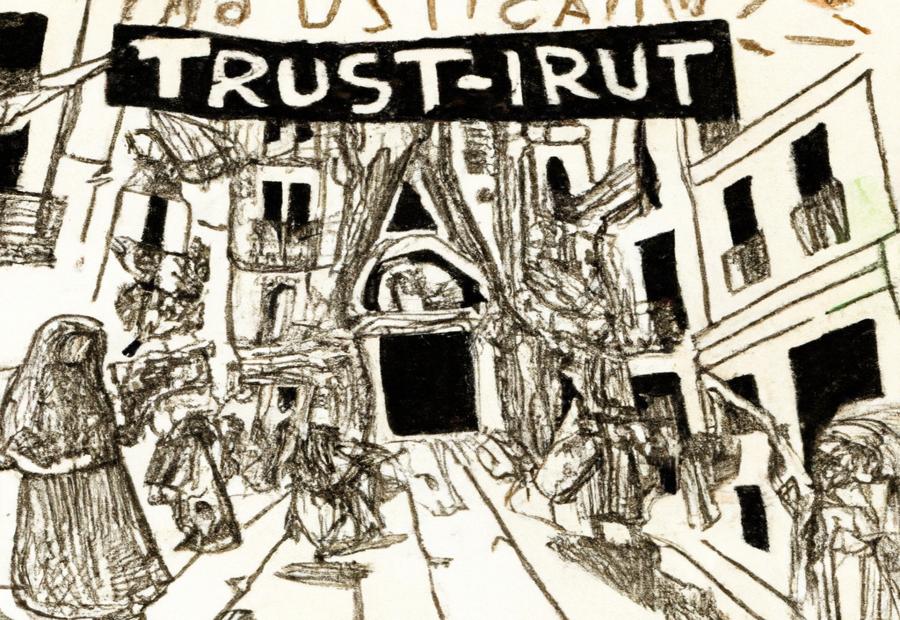
Photo Credits: Ktjkrug.Com by Benjamin Taylor
Grasping the history of tourism is key for reaping the benefits of this sector. Examining the past helps us understand how modern tourism has been formed and the influences it has had through time. Knowing historical trends, advancements, and issues provides us with the right tools to make thoughtful choices and form the future of tourism.
Delving into the history of tourism gives us the chance to recognize its changing power. By going through the Reference Data, we can observe how travel has changed from ancient times to now, seeing the emergence of distinct forms of travel, the growth of transportation systems, and the rise of popular destinations. This knowledge lets us spot the patterns and trends which have impacted tourism, and predict future progress. By deepening our knowledge of experiences and lessons of the past, we can create good policies, manage destinations well, and market tourism smartly.
Furthermore, understanding the history of tourism assists us in recognizing its economic impact on different societies. The Reference Data uncovers how tourism has brought economic gain, job creation, infrastructure development, and cultural exchange. Examining case studies and examples of the past gives us valuable understanding of how tourism has acted as a motivator for local progress, social transformation, and intercultural acceptance. This understanding allows us to plan and apply responsible and sustainable tourism practices that assist local communities and protect cultural heritage.
Some Facts About the History of Tourism:
- ✅ Tourism emerged in the 19th century as a result of the Industrial Revolution. (Source: Team Research)
- ✅ The German School of Tourism studies in the 1930s defined tourism as trips made for pleasure or commercial reasons, where the absence from one’s habitual residence is temporary. (Source: Team Research)
- ✅ The pioneers of tourism theory, Walter Hunziker and Kurt Krapf, defined tourism as the relationships and phenomena resulting from people leaving their homes temporarily, as long as the displacements and stays are not motivated by a lucrative activity. (Source: Team Research)
- ✅ Thomas Cook organized the first planned voyage in 1841, marking the beginning of the tourist package and the establishment of the first travel agency in the world. (Source: Team Research)
- ✅ The development of leisure culture and the rising middle class in Western countries led to a tourism boom between 1950 and 1973. (Source: Team Research)
FAQs about History Of Tourism
1. How did tourism originate?
Answer: Tourism originated as a result of the Industrial Revolution in the 19th century, when people started traveling for leisure, rest, culture, health, business, or family relationships. The availability of transportation and the desire for new experiences led to the emergence of tourism as a major economic activity.
2. What is the history of tourism in ancient times?
Answer: Historical evidence of tourism can be found in ancient civilizations such as Rome and Greece. People in ancient Rome traveled for religious, sporting, and health reasons, while in Greece, the concept of the grand tour and educational journeys was popularized.
3. How did the development of transportation impact tourism?
Answer: The development of transportation, especially the introduction of steamships and railways in the 19th century, made travel more accessible and contributed to the growth of the tourism industry. Railways promoted domestic and international travel, while steam navigation opened up tourist destinations worldwide.
4. How has the tourism industry evolved in the modern era?
Answer: In the modern era, tourism has experienced exponential growth with the advent of jet travel, credit cards, and the accessibility of travel for the working and middle classes. The rise of budget airlines in the 1990s further expanded travel opportunities, making tourism a global phenomenon.
5. What is the impact of tourism on the local economy?
Answer: Tourism has become a major economic driver in many countries, contributing to GDP, employment, and foreign exchange earnings. It stimulates various sectors such as accommodation, transportation, food and beverage, and attractions, generating significant economic figures annually.
6. How has the COVID-19 pandemic affected the tourism industry?
Answer: The COVID-19 pandemic has had a severe impact on the tourism industry, with international tourist arrivals drastically declining due to travel restrictions and safety concerns. The industry has faced challenges in terms of balancing economic recovery with the need for public health safety measures. However, efforts are being made to revive tourism in a sustainable and responsible manner.

